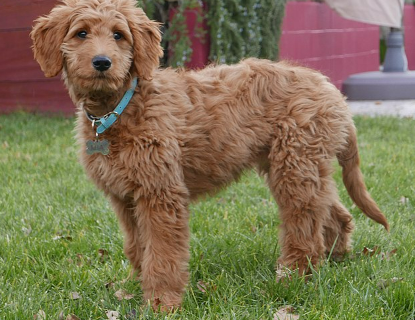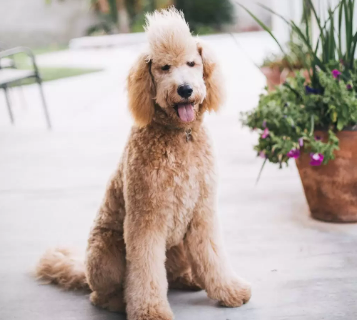Goldendoodles have been a rapidly popular option of a family pet that come from parents of two different pure breeds, meaning you cannot exactly predict what color your puppy will turn out to be. These active dogs are affectionate, sociable, lots of fun and trainable.
Goldendoodles actually come in a rainbow of colors. All Goldendoodles will have a base coat which is either chocolate or black. There are so many types of Goldendoodles color genetics. If you want to know what types of Goldendoodles color genetics spread in the world, let’s identify each Goldendoodle color genetic in our post below!
Here Are the Types of Goldendoodles Color Genetics!
With the shade of color determined by the intensity of the inherited gene, the colors of all Golden Retriever ancestry are all controlled by the same gene. The Poodle heritage includes apricots, creams and reds. The Poodle itself lends the chocolate, black, silver and gray coloring to the Goldendoodle coat.
So, here are the types of Goldendoodle color genetics:
1. Brown Goldendoodles

Brown is an absolutely popular color of Goldendoodles. Since the American Kennel Club (AKC) acknowledges brown as an official Poodle color, it does not wonder if you see a number of those puppies at your local dog park. The brown color commonly comes from the dominant Poodle genes.
2. Cream Goldendoodles
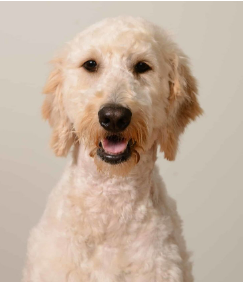
Since the puppies’ physical makeup varies widely, you will rarely find two cream Goldendoodles which are identical. These are officially known as cream since the AKC recognizes the cream Poodle, even though those dogs are sometimes referred to as white.
3. Apricot Goldendoodles

Since these look just like cute teddy bears, that’s why the Apricot Goldendoodles are so sought-after. The AKC also acknowledges an apricot Poodle color, so you will be able to find apricot Goldendoodle puppies quite easily. It is known that Apricot Goldendoodles will have certain black points including the eye rims, eyes, nails and nose.
4. Red Goldendoodles

The goldendoodles that have the red coat color are the brightest of all the Goldendoodle colors. These are super-popular, particularly since these puppies look very much like teddy bears. This type of Goldendoodle color is often achieved by breeders through mixing a regular colored Golden with a darker shaded Poodle, even though red is not an officially recognized Poodle coat color or Golden retriever.
5. Black Goldendoodles

The black coat color is quite uncommon color morphs which come about due to a recessive gene which is found in either the Golden Retriever or Poodle. To generate a black Goldendoodle puppy, both the parents have to carry the recessive black gene.
6. Parti Goldendoodles

Parti Goldendoodles will have bi-colored coats, one of which is at least 50% white. You may commonly see tan and apricot, but the other shade can be any color. This Parti Goldendoodle is a color morph that is created by recessive genes which override the solid color coat. That’s why the Parti Goldendoodle is very rare to find.
7. Black and White Goldendoodles

Tuxedo Goldendoodles are also known as black and white Goldendoodles that have a white nose, white chest and a streak of white across the top of their heads. Tuxedo Goldendoodles are quite different from other genetics, as they have a white belly, white hind legs, white bib and being black down their whole back.
8. White Goldendoodles

White Goldendoodles tend not to be so famous with breeders, since these can be more sensitive than other colors. White Goldendoodles are susceptible to skin conditions and sunburn if their skin is pinkish.
9. Tan Goldendoodles
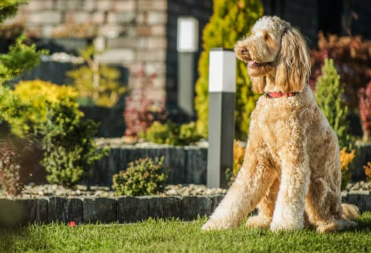
These are one of the most commonly seen colors which are extremely famous since they resemble teddy bears. They are commonly generated through a combination of cream and apricot Goldendoodles. Well, you will see shades of pale apricot and white in their coats.
10. Sable Goldendoodles

These Sable Goldendoodles are very unique since they are born dark brown or solid black, turning to a lighter cream or tan color with black tips to the hairs of the coat when the dog matures.
11. Merle Goldendoodles

Merle Goldendoodles are commonly the result of crossing a Poodle with an Australian Shepherd or a Border Collie. Sometimes, you will be able to get Merle Goldendoodles from crossbreeding Goldendoodles with Goldendoodles.
To generate a Merle Puppy, you will need one parent to be merle colored to cover recessive genes of the other parent. You shouldn’t breed two Merle Goldendoodles, as the result may be the puppies which are blind, deaf or have other physical deformities.
12. Brindle Goldendoodles

Bridle refers to the term that is used to describe a striped coat pattern and is very rarely seen in Goldendoodles. The dogs with a brindle coat pattern will have a specific recessive gene. Depending on the other genes present, the extent of brindling will vary tremendously.
13. Phantom Goldendoodles

These types of Goldendoodles are another very rare morph that have two colors in particular locations to be classified as a phantom. The primary color should cover the majority of the dog’s body. Then, the second color will appear in the dog’s eyes, on the lower part of the legs and on its muzzle.
14. Grey Goldendoodles
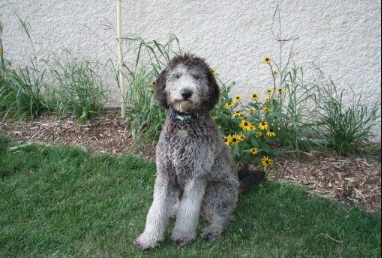
These Grey Goldendoodles look very similar to silver Poodles, since they are often born dark black, turning to grey by the time the puppy reaches two years of age. You will commonly know when your puppy reaches six weeks of age whether or not the coat of your puppy will turn to grey.
15. Chocolate Goldendoodles
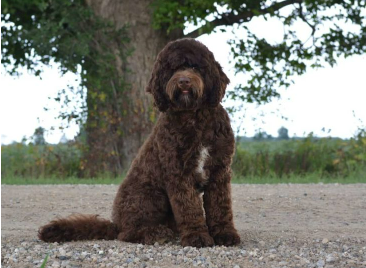
This is a pretty common color, since the AKC acknowledges brown as an official Poodle color.
16. Blue Goldendoodles
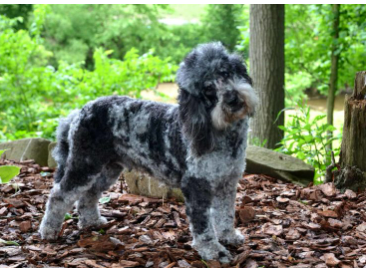
The Blue Goldendoodles are similar to the Grey Goldendoodles. They frequently start as black puppies, turning to a very dark, steel blue-grey by the time that they reach adulthood.
17. Silver Goldendoodles
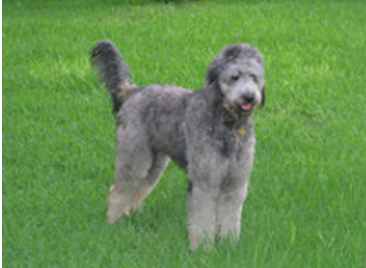
The Silver Goldendoodles is a very rare color which starts as a black puppy, turning to a pretty silver color when he grows up. In this case, Silver and Blue Goldendoodles will be often produced from multiple generations of breeding in which the recessive coat color genes come to the fore rather than being masked by dominant genes.

